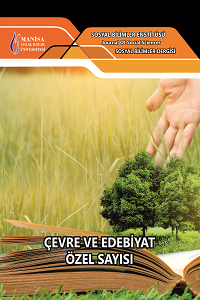Öz
Teknolojinin hızla gelişmesi, nüfus yoğunluğunun
artması, su kaynaklarının bilinçsiz kullanımı, endüstriyel ve evsel atıkların
su kaynaklarına boşaltılması, sucul ekosistemlerin zenginleştirilmesi sonucu
denizler ve içsu kaynakları non-esansiyel element (kadmiyum, arsenik, baryum
vb.) kirliliğinin etkisi altındadır. Bu nedenle bitkilerle özellikle alglerle
yapılan giderim tekniği, yüksek giderim verimi, ucuz bakım ve işletme maliyeti
sebebiyle tüm dünyada uygulanmaktadır.
Bu çalışma
canlı C. vulgaris (chlorophyta) mikroalgini kullanarak 0.5; 1; 2.5; 5 ve 10 ppm
konsantrasyonlu sulu solüsyonlardan kadmiyum (Cd+2), kurşun (Pb+2),
kalay (Sn+4), baryum (Ba+2) ve arsenik (As+5) ağır metallerinin giderim kapasitesinin
belirlenmesini amaçlamaktadır. Deneyler sırasıyla CdSO4·8H2O, Pb(NO3)2,
Sn02, Ba(NO3)2 ve Na2HAsO4.7H2O analitik derecedeki kimyasal reaktiflerden hazırlanan Cd,
Pb, Sn, Ba ve As sentetik tek metal çözeltileri kullanılarak gerçekleştirildi.
Deneysel verilere dayanarak, C. vulgaris hücreleri kullanılarak non-esansiyel
metallerin ortalama adsorpsiyon kapasitesi sırasıyla Sn için 254.939 mg/g, Pb için
254.536 mg/g, Ba için 238.563 mg/g, Cd için 235.288 mg/g ve As için 227.543
mg/g (Sn>Pb>Ba>Cd>As) olarak
belirlenmiştir. Bu çalışma, Chlorella hücrelerinin, Sn, Pb, Ba, Cd ve As
adsorpsiyonunun yüksek verimliliği nedeniyle sulu çözeltilerden beş
non-esansiyel ağır metal iyonunun uzaklaştırılması için etkili bir adsorbent
olduğunu ortaya koymuştur.
Anahtar Kelimeler
Non-essential elements Water pollution Chlorella vulgaris Heavy metal uptake
Kaynakça
- CABRITA, M.T., RAIMUNDO, J., PEREIRA, P. and VALE, C. (2014). “Immobilised Phaeodactylum tricornutum as Biomonitor of Trace Element Availability in the Water Column During Dredging”, Environmental Science And Pollution Research, 21 (5), 3572-3581. DUBOIS, M., GILLES, A.K., HAMILTON, J.K., REBERS, P.A. and SMITH, F. (1956). “Colorimetric Method for Determination of Sugars and Related Substances”, Analytical Chemistry, 28 (1), 350- 356. FOSTER, P.L. (1982). “Metal Resistances of Chlorophyta from Rivers Polluted by Heavy Metals”, Freshw. Biol. 12 (1), 41-61. GADD, G.M. (1990). Accumulation of Metals by Microorganisms and Algae. In: Rehm KJ, ed., Biotechnology Handbook 6B Special Microbial Processes.Weinheim: VCH Verlagsgesselschaft. GOKHALE, S.V., JYOTİ, K.K. and LELE, S.S. (2008). “Kinetic and Equilibrium Modeling of Chromium (VI) Biosorption on Fresh and Spent Spirulina platensis/Chlorella vulgaris Biomass”, Biores. Technol. 99 (1), 3600-3608. HORDING, J.P.C. and WHITTON, B.A. (1976). Resistance of Stigeoclonium tenue in the Field and the Laboratory. Br. Phycol. J. 11 (1), 417-426. JI, L., XIE, S., FENG, J., LI, Y. and CHEN, L. (2011). “Heavy Metal Uptake Capacities by the Common Fresh Water Green Alga Cladophora fracta”, J Appl Phycol, 24 (1), 979-983. MEHTA, S.K., and GAUR, J.P. (2001). “Characterization and Optimization of Ni and Cu Sorption from Aqueous Solution by Chlorella vulgaris”, Ecol. Eng. 18 (2), 1-13. METZNER, H., RAU, H. and SENGER, H. (1965). Untersuchungen zür Synchronisierbarteit einzelner Pigmentan Angel Mutanten Von Chlorella. Planta, 2 (1), 165-186. MORENO-GARRİDO, I., CAMPANA, O., LUBİAN, L.M. and BLASCO, J. (2005). “Calcium Alginate Immobilized Marine Microalgae: Experiments on Growth and Short-Term Heavy Metal Accumulation”, Mar. Pollut. Bull. 51 (8), 823-829. SAY, P.J., DIAZ, B.M. and WHITTON, B.A. (1977). Influence of Zinc on Lotic Plants. 1-Tolerance of Hormidium Species to Zinc, Freshw. Biol. 7 (1), 357-376. SRIVASTAVA, N.K. and MAJUMDER, C.B. (2008). Novel Biofiltration Methods for the Treatment of Heavy Metals from Industrial Wastewater, J. Hazard Mater. 151 (2), 1–8. STOKES, P.M. (1983). Responses of Freshwater Algae to Metals. Prog. Phycol. Res. 2 (1), 87-112. MOISEENKO, T.I. and KUDRYAVTSEVA, L.P. (2001). “Trace Metal Accumulation and Fish Pathologies in Areas Affected by Mining and Metallurgical Enterprises in the Kola Region, Russia”, Environmental Pollution, 114 (2), 285- 297. UZUN, F. ve ALTAŞ, L. (2014). Doğal Adsorban Olarak Zeolit (Bigadiç/Balıkesir) ile Sulardan Ağır Metal Gideriminin İncelenmesi, Aksaray Üniversitesi Fen Bilimleri Enstitüsü, Yüksek Lisans Tezi, Aksaray. VIJAYARAGHAVAN, K. and PRABU, D. (2006). “Potential of Sargassum wightii Biomass for Copper(II) Removal from Aqueous Solutions: Application of Different Mathematical Models to Batch and Continuous Biosorption Data”, J. Hazard. Mater. 137 (1), 558-564. VOLESKY, B. (1990). Removal and Recovery of Heavy Metals by Biosorption. In: Volesky B, ed., Biosorption of heavy metals. Boca Raton: CRC Pree Inc. WHITTON, B.A. (1980). Zinc and Plants in Rivers and Stream. Zinc in the Environment, part II. In: Nriagu O. ed., Health Effects. Hoboken: J. Wiley and Sons, 364-440. WILDE, E.W. and BENEMANN, J.R. (1993). Bioremoval of Heavy Metals by the Use of Microalgae, Biotechnol. Adv. 11 (2), 781–812. RIPPKA, R. (1988). Isolation and Purification of Cyanobacteria. Methods Enzymol, 167 (2), 3-27. ZHOU, J.L., HUANG, P.L. and LİN, R.G. (1998). “Sorption and Desorption of Cu and Cd by Macroalgae and Microalgae”, Environ. Pollut. 101 (1), 67-75.
Ayrıntılar
| Birincil Dil | İngilizce |
|---|---|
| Bölüm | Makaleler |
| Yazarlar | |
| Yayımlanma Tarihi | 16 Mayıs 2018 |
| Yayımlandığı Sayı | Yıl 2018 Cilt: 16 Sayı: 1/2 |


